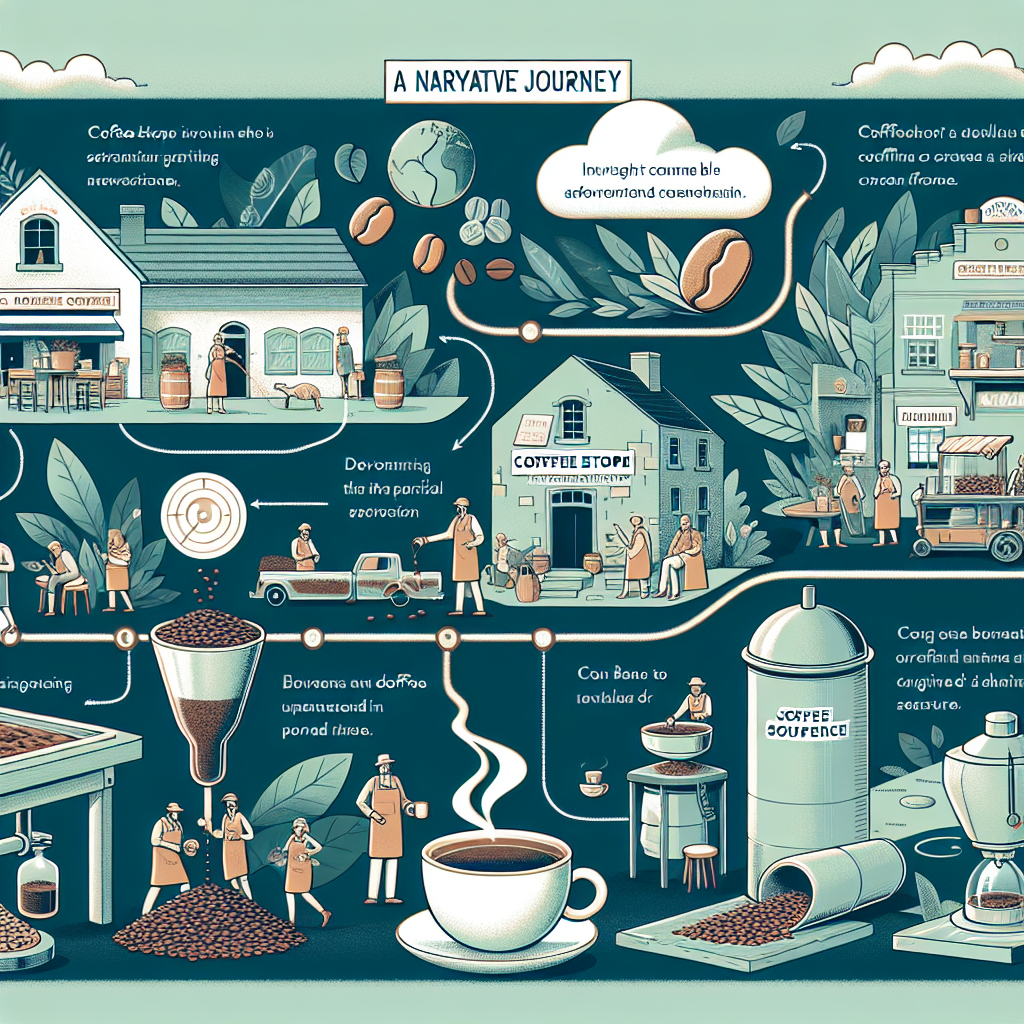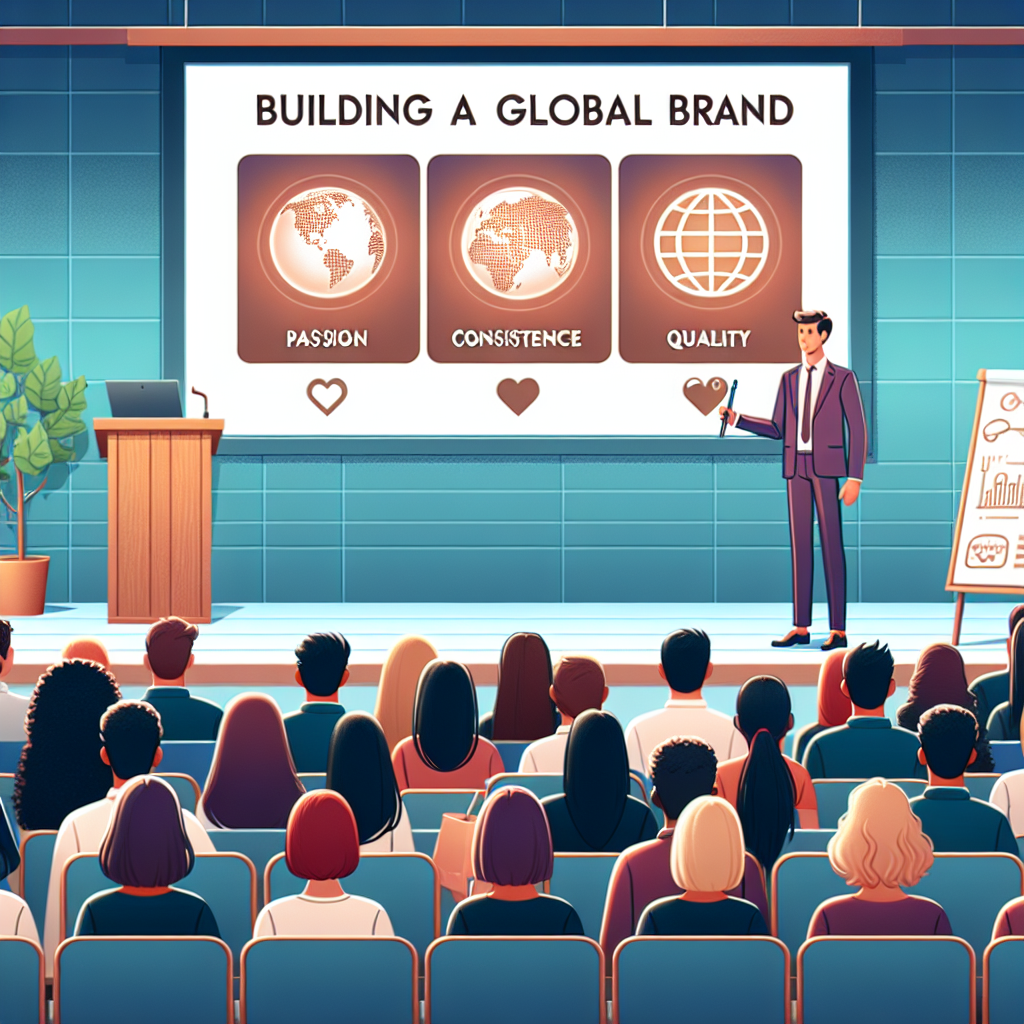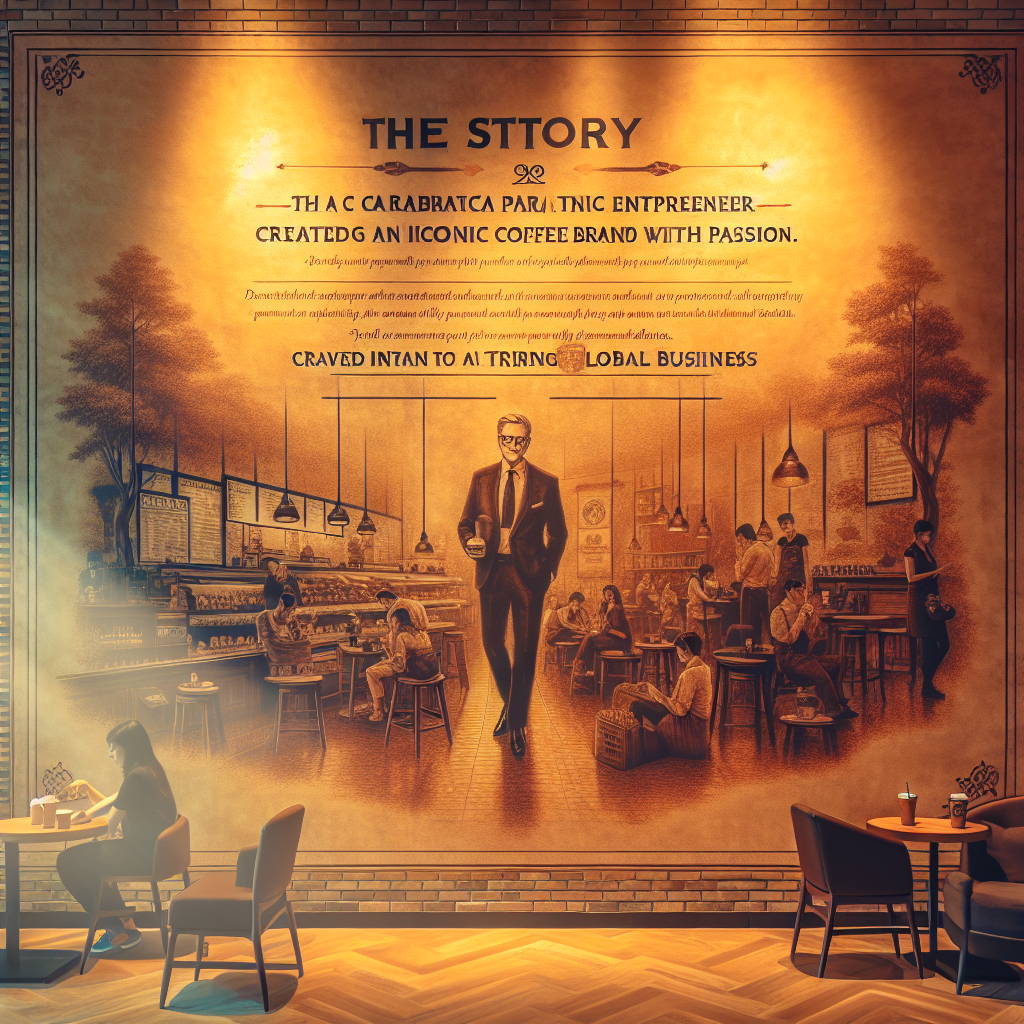Insights from Howard Schultz’s Journey with Starbucks
Leadership Lessons from Howard Schultz’s Starbucks Journey
Howard Schultz’s journey with Starbucks is a compelling narrative of visionary leadership, resilience, and innovation. His story offers a treasure trove of leadership lessons that can inspire and guide aspiring leaders in any field. Schultz’s tenure at Starbucks is marked by his ability to see potential where others saw limitations, his commitment to creating a unique company culture, and his unwavering focus on the customer experience.
One of the most striking aspects of Schultz’s leadership is his visionary approach. When Schultz first joined Starbucks in 1982, the company was a small coffee bean retailer in Seattle. However, Schultz saw beyond the beans; he envisioned a place where people could gather, relax, and enjoy a cup of coffee. This vision was inspired by his trip to Italy, where he observed the vibrant coffee culture and the sense of community in Italian espresso bars. Schultz’s ability to see what Starbucks could become, rather than what it was, is a testament to the power of visionary leadership. He transformed Starbucks from a local coffee bean shop into a global coffeehouse chain, demonstrating that a clear and compelling vision can drive extraordinary growth and success.
Transitioning from vision to execution, Schultz’s commitment to creating a unique company culture is another key leadership lesson. He believed that Starbucks should be a place where employees, whom he referred to as ”partners,” felt valued and respected. Schultz introduced comprehensive health benefits and stock options for part-time employees, a move that was almost unheard of at the time. This commitment to employee welfare fostered a sense of loyalty and pride among Starbucks partners, which in turn translated into better customer service. Schultz’s approach underscores the importance of investing in employees and creating a positive work environment as a foundation for business success.
Moreover, Schultz’s focus on the customer experience has been a cornerstone of Starbucks’ strategy. He understood that Starbucks was not just selling coffee; it was selling an experience. From the ambiance of the stores to the quality of the coffee, every detail was meticulously crafted to enhance the customer experience. Schultz’s emphasis on customer satisfaction is a reminder that businesses thrive when they prioritize the needs and preferences of their customers. This customer-centric approach has helped Starbucks build a loyal customer base and a strong brand reputation.
In addition to these principles, Schultz’s resilience in the face of challenges offers valuable insights. During the 2008 financial crisis, Starbucks faced significant difficulties, including declining sales and store closures. Schultz returned as CEO and implemented a series of bold measures to revitalize the company. He closed underperforming stores, streamlined operations, and refocused on the core values of the brand. Schultz’s ability to navigate through tough times and make difficult decisions highlights the importance of resilience and adaptability in leadership.
Furthermore, Schultz’s journey with Starbucks illustrates the significance of innovation. He continually sought ways to innovate and stay ahead of market trends, whether it was through introducing new products, embracing digital technology, or expanding into international markets. Schultz’s innovative mindset ensured that Starbucks remained relevant and competitive in a rapidly changing industry.
In conclusion, Howard Schultz’s journey with Starbucks provides a rich source of leadership lessons. His visionary approach, commitment to company culture, focus on customer experience, resilience, and innovative mindset are all qualities that aspiring leaders can learn from. Schultz’s story is a powerful reminder that effective leadership involves seeing potential, investing in people, prioritizing customers, staying resilient, and embracing innovation. These lessons from Schultz’s Starbucks journey can serve as a guiding light for leaders striving to make a meaningful impact in their organizations.
The Power of Vision: How Schultz Transformed Starbucks
Howard Schultz’s journey with Starbucks is a compelling narrative of vision, perseverance, and transformation. When Schultz first encountered Starbucks in 1981, it was a small coffee bean retailer in Seattle with just a handful of stores. However, Schultz saw beyond the beans and brewing equipment; he envisioned a place where people could gather, relax, and enjoy a cup of coffee. This vision was inspired by his trip to Italy, where he observed the vibrant coffee culture and the sense of community that Italian espresso bars fostered. Schultz believed that Starbucks could replicate this experience in the United States, creating a ”third place” between home and work where people could connect.
Initially, Schultz faced resistance from the original Starbucks founders, who were more focused on selling high-quality coffee beans than on creating a café experience. Undeterred, Schultz left Starbucks to start his own coffeehouse chain, Il Giornale, which quickly gained popularity. In 1987, he seized the opportunity to purchase Starbucks, merging it with Il Giornale and becoming the CEO of the newly formed Starbucks Corporation. This marked the beginning of a transformative journey that would see Starbucks grow from a regional player to a global coffee powerhouse.
One of the key elements of Schultz’s vision was the emphasis on creating a unique customer experience. He understood that Starbucks needed to offer more than just coffee; it had to provide an inviting atmosphere, exceptional service, and a sense of community. To achieve this, Schultz focused on employee satisfaction, believing that happy employees would lead to happy customers. He introduced comprehensive benefits for both full-time and part-time employees, including healthcare and stock options, which were revolutionary at the time. This approach not only fostered loyalty and motivation among employees but also set Starbucks apart as a socially responsible company.
Moreover, Schultz was committed to maintaining the quality and integrity of Starbucks’ products. He invested in sourcing the finest coffee beans and established direct relationships with coffee farmers, ensuring fair trade practices and sustainable farming methods. This commitment to quality extended to every aspect of the business, from the meticulous design of the stores to the training of baristas. Schultz’s attention to detail and unwavering dedication to excellence helped build a strong brand identity that resonated with customers worldwide.
As Starbucks expanded, Schultz faced numerous challenges, including economic downturns, competition, and the complexities of managing a global enterprise. However, his ability to adapt and innovate kept the company on a growth trajectory. For instance, Schultz embraced technology early on, introducing the Starbucks Card and mobile app, which enhanced customer convenience and loyalty. He also diversified the product offerings, adding items like Frappuccinos and food options, which broadened the appeal of Starbucks beyond just coffee enthusiasts.
In addition to his business acumen, Schultz’s leadership was characterized by a deep sense of social responsibility. He used Starbucks as a platform to address broader societal issues, such as racial inequality, veterans’ support, and environmental sustainability. This commitment to making a positive impact further strengthened the company’s reputation and customer loyalty.
In conclusion, Howard Schultz’s transformation of Starbucks is a testament to the power of vision and the importance of staying true to one’s values. His ability to see potential where others did not, combined with his focus on quality, employee satisfaction, and social responsibility, turned Starbucks into a global icon. Schultz’s journey serves as an inspiring example for entrepreneurs and business leaders, demonstrating that with vision, perseverance, and a commitment to excellence, it is possible to create a lasting and meaningful impact.
Overcoming Challenges: Schultz’s Resilience in Building Starbucks
Howard Schultz’s journey with Starbucks is a compelling narrative of resilience, vision, and unwavering determination. When Schultz first encountered Starbucks in 1981, it was a small coffee bean retailer in Seattle with just a handful of stores. However, Schultz saw beyond the beans; he envisioned a place where people could gather, relax, and enjoy a cup of coffee. This vision, however, was not without its challenges.
Initially, Schultz faced significant resistance from the original Starbucks owners when he proposed transforming the company into a coffeehouse chain. They were skeptical about deviating from their core business of selling high-quality coffee beans and equipment. Undeterred, Schultz decided to take a leap of faith. He left Starbucks and started his own coffeehouse chain, Il Giornale, which quickly gained popularity. This success eventually led him to acquire Starbucks in 1987, merging it with Il Giornale and setting the stage for the global coffee empire we know today.
Transitioning from a small regional business to a global brand was no small feat. Schultz encountered numerous obstacles along the way, including financial difficulties and market skepticism. In the early years, securing funding was a constant struggle. Many investors were hesitant to back a business model that seemed risky and unproven. However, Schultz’s passion and belief in his vision were infectious. He managed to convince a few key investors to support his dream, laying the financial foundation for Starbucks’ expansion.
As Starbucks began to grow, Schultz faced the challenge of maintaining the company’s unique culture and values. He was adamant that Starbucks should be more than just a place to buy coffee; it should be a ”third place” between home and work, where customers could feel a sense of community. To achieve this, Schultz focused on creating an exceptional customer experience and fostering a positive work environment for employees, whom he referred to as ”partners.” This approach not only differentiated Starbucks from its competitors but also built a loyal customer base and a dedicated workforce.
However, the path to success was not always smooth. In the late 2000s, Starbucks experienced a period of overexpansion and declining sales. Schultz, who had stepped down as CEO in 2000, returned to the helm in 2008 to steer the company through this turbulent time. He implemented a series of bold measures, including closing underperforming stores, retraining baristas, and refocusing on the core values that had made Starbucks successful in the first place. These efforts paid off, and Starbucks emerged from the crisis stronger than ever.
Throughout his journey, Schultz’s resilience and adaptability were key to overcoming the myriad challenges he faced. He was never afraid to make tough decisions or pivot when necessary, always keeping the long-term vision in mind. His ability to inspire and lead by example also played a crucial role in rallying his team and stakeholders during difficult times.
In conclusion, Howard Schultz’s journey with Starbucks is a testament to the power of resilience and visionary leadership. Despite numerous challenges, Schultz’s unwavering belief in his vision and his ability to adapt and innovate were instrumental in transforming Starbucks into a global coffee powerhouse. His story serves as an inspiration to entrepreneurs and business leaders, demonstrating that with passion, determination, and a clear vision, it is possible to overcome even the most daunting obstacles.
Innovation and Growth: Schultz’s Strategies for Starbucks’ Success
Howard Schultz’s journey with Starbucks is a compelling narrative of innovation and growth, marked by strategic decisions that have propelled the company to global prominence. Schultz’s vision for Starbucks was not just about selling coffee; it was about creating an experience. This vision has been the cornerstone of the company’s success, and understanding the strategies he employed offers valuable insights into how innovation and growth can be effectively managed.
One of the key strategies Schultz implemented was the concept of the ”third place.” He envisioned Starbucks as a place between home and work where people could relax, socialize, and enjoy a high-quality cup of coffee. This idea was revolutionary at the time and required a significant shift in how coffee shops operated. By focusing on the ambiance, customer service, and the overall experience, Schultz transformed Starbucks into a destination rather than just a pit stop. This approach not only attracted a loyal customer base but also differentiated Starbucks from its competitors.
In addition to creating a unique customer experience, Schultz was also a pioneer in product innovation. He understood that to keep customers coming back, Starbucks needed to continually evolve its menu. This led to the introduction of a variety of beverages and food items, catering to diverse tastes and preferences. Seasonal offerings, such as the iconic Pumpkin Spice Latte, created a sense of anticipation and excitement among customers. By constantly innovating and expanding the product line, Schultz ensured that Starbucks remained relevant and appealing to a broad audience.
Moreover, Schultz’s commitment to quality was unwavering. He believed that the foundation of Starbucks’ success lay in the quality of its coffee. To this end, he invested in sourcing the best coffee beans and maintaining rigorous quality control standards. This commitment extended to the training of baristas, who were taught not just how to make coffee, but how to create a memorable experience for each customer. This focus on quality helped build trust and loyalty among customers, reinforcing Starbucks’ reputation as a premium coffee brand.
Another significant aspect of Schultz’s strategy was his approach to growth. While many companies focus on rapid expansion, Schultz was more measured in his approach. He believed in growing the company sustainably, ensuring that each new store maintained the same high standards as the original locations. This careful approach to expansion helped preserve the brand’s integrity and prevented the dilution of the Starbucks experience. Furthermore, Schultz was not afraid to close underperforming stores or exit markets that did not align with the company’s long-term vision. This strategic pruning allowed Starbucks to focus its resources on areas with the highest potential for success.
Schultz also recognized the importance of technology in driving growth. Under his leadership, Starbucks embraced digital innovation, introducing mobile ordering and payment options that enhanced convenience for customers. The Starbucks Rewards program, a loyalty initiative, leveraged technology to build deeper connections with customers and encourage repeat business. These technological advancements not only improved the customer experience but also provided valuable data that helped Starbucks refine its offerings and marketing strategies.
In conclusion, Howard Schultz’s journey with Starbucks is a testament to the power of vision, innovation, and strategic growth. By focusing on creating a unique customer experience, maintaining high-quality standards, and embracing technology, Schultz transformed Starbucks into a global coffee powerhouse. His strategies offer valuable lessons for any business looking to achieve sustainable growth and long-term success.
Community and Culture: Schultz’s Impact on Starbucks’ Corporate Values
Howard Schultz’s journey with Starbucks is a compelling narrative of vision, resilience, and a deep commitment to community and culture. When Schultz first encountered Starbucks in 1981, it was a small coffee bean retailer in Seattle. However, he saw potential far beyond its modest beginnings. His vision was to create a ”third place” between home and work, where people could gather, connect, and enjoy high-quality coffee. This vision was not just about selling coffee; it was about fostering a sense of community and belonging.
One of the most significant ways Schultz impacted Starbucks’ corporate values was through his unwavering belief in the importance of treating employees, or ”partners” as they are called, with respect and dignity. Schultz understood that a company’s success is intrinsically linked to the well-being of its employees. Consequently, he introduced innovative benefits such as comprehensive healthcare for both full-time and part-time employees, a rarity in the retail industry at the time. This move not only improved employee morale but also set a new standard for corporate responsibility.
Moreover, Schultz’s commitment to creating a positive work environment extended to offering stock options to employees, giving them a stake in the company’s success. This initiative, known as Bean Stock, was revolutionary and fostered a sense of ownership and pride among employees. By aligning the interests of the employees with those of the company, Schultz cultivated a culture of mutual respect and shared success.
Transitioning from employee welfare to customer experience, Schultz’s influence is equally profound. He believed that Starbucks should be a place where customers feel valued and appreciated. This philosophy is evident in the company’s emphasis on customer service and the creation of a welcoming atmosphere in its stores. Schultz’s vision was to make each Starbucks location a community hub, a place where people could relax, work, or socialize. This focus on creating a unique customer experience has been a cornerstone of Starbucks’ success and has helped differentiate it from other coffee chains.
In addition to fostering a strong internal culture and enhancing customer experience, Schultz also prioritized social responsibility. Under his leadership, Starbucks has been at the forefront of various social initiatives, including ethical sourcing of coffee beans, environmental sustainability, and community engagement. Schultz believed that businesses have a responsibility to give back to the communities they serve. This belief is reflected in Starbucks’ numerous community service projects and its commitment to reducing its environmental footprint.
Furthermore, Schultz’s leadership style has always been characterized by transparency and open communication. He frequently engaged with employees and customers alike, listening to their feedback and making adjustments accordingly. This approach not only built trust but also ensured that the company remained responsive to the needs and concerns of its stakeholders.
In conclusion, Howard Schultz’s impact on Starbucks’ corporate values is profound and multifaceted. His commitment to creating a supportive and inclusive work environment, enhancing customer experience, and prioritizing social responsibility has shaped Starbucks into more than just a coffee company. It has become a global community where people feel connected and valued. Schultz’s journey with Starbucks is a testament to the power of visionary leadership and the importance of fostering a strong, values-driven corporate culture. Through his efforts, Schultz has not only transformed Starbucks but also set a benchmark for corporate responsibility and community engagement in the business world.











